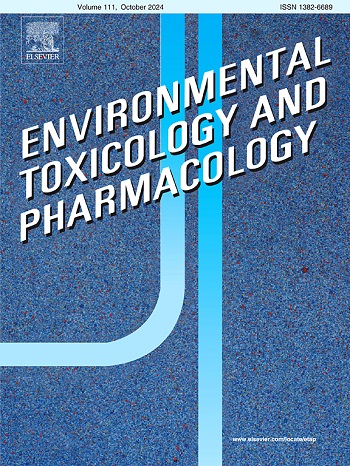从印度尼西亚东爪哇海岸传统鱼市场采集的青贻贝(Perna viridis Linnaeus, 1758)中的微塑料污染及其相关风险评估
IF 4.2
3区 环境科学与生态学
Q2 ENVIRONMENTAL SCIENCES
引用次数: 0
摘要
在印度尼西亚东爪哇的传统鱼市上出售的青贻贝很可能受到微塑料的污染,因为它们的栖息地在沿海水域,这些水域受到包括住宅、工业和农业活动在内的人类活动的很大影响。本研究调查了从印度尼西亚东爪哇海岸五个传统鱼市场收集的青贻贝中的微塑料污染,并评估了食用这些贻贝对人类的相关健康风险。研究结果表明,绿色贻贝中最常见的微塑料为纤维和碎片类型,颜色为黑色和红色,尺寸为<; 100 µm和100 - <; 500 µm。来自东爪哇海岸的绿贻贝,无论大小,都显示出相似数量的微塑料。从传统鱼市采集的青贻贝的聚合物危害指数值可划分为860 (III =高)~ 1980 (IV =非常高)的危害等级。通过FTIR和GCMS分析,在绿贻贝的组织中检测到各种塑料生产中常用的有害化合物和有害聚合物。本文章由计算机程序翻译,如有差异,请以英文原文为准。
Microplastic contamination in green mussels (Perna viridis Linnaeus, 1758) collected from the traditional fish markets along the East Java coast of Indonesia and the associated risk assessment
The green mussels sold at traditional fish markets in East Java, Indonesia, are likely to be contaminated with microplastics as a result of their habitat in coastal waters, which are considerably impacted by human activities, including residential, industrial, and agricultural activities. This study investigates microplastic contamination in green mussels collected from five traditional fish markets along the East Java coast, Indonesia, and assesses the associated health risks to humans from consuming these mussels. The findings indicated that microplastics, identified as fiber and fragment types, in black and red colors, with sizes of < 100 µm and 100 - < 500 µm, are the most common in green mussels. Green mussels from the East Java coast, regardless of size, demonstrate similar amounts of microplastics. The polymer hazard index value of green mussels collected from traditional fish markets can be classified within the 860 (III = high) to 1980 (IV = very high) hazard categories. Various hazardous chemical compounds and harmful polymers that are commonly used in plastic production were detected in the tissues of green mussels through FTIR and GCMS analyses.
求助全文
通过发布文献求助,成功后即可免费获取论文全文。
去求助
来源期刊
CiteScore
7.00
自引率
4.70%
发文量
185
审稿时长
34 days
期刊介绍:
Environmental Toxicology and Pharmacology publishes the results of studies concerning toxic and pharmacological effects of (human and veterinary) drugs and of environmental contaminants in animals and man.
Areas of special interest are: molecular mechanisms of toxicity, biotransformation and toxicokinetics (including toxicokinetic modelling), molecular, biochemical and physiological mechanisms explaining differences in sensitivity between species and individuals, the characterisation of pathophysiological models and mechanisms involved in the development of effects and the identification of biological markers that can be used to study exposure and effects in man and animals.
In addition to full length papers, short communications, full-length reviews and mini-reviews, Environmental Toxicology and Pharmacology will publish in depth assessments of special problem areas. The latter publications may exceed the length of a full length paper three to fourfold. A basic requirement is that the assessments are made under the auspices of international groups of leading experts in the fields concerned. The information examined may either consist of data that were already published, or of new data that were obtained within the framework of collaborative research programmes. Provision is also made for the acceptance of minireviews on (classes of) compounds, toxicities or mechanisms, debating recent advances in rapidly developing fields that fall within the scope of the journal.

 求助内容:
求助内容: 应助结果提醒方式:
应助结果提醒方式:


